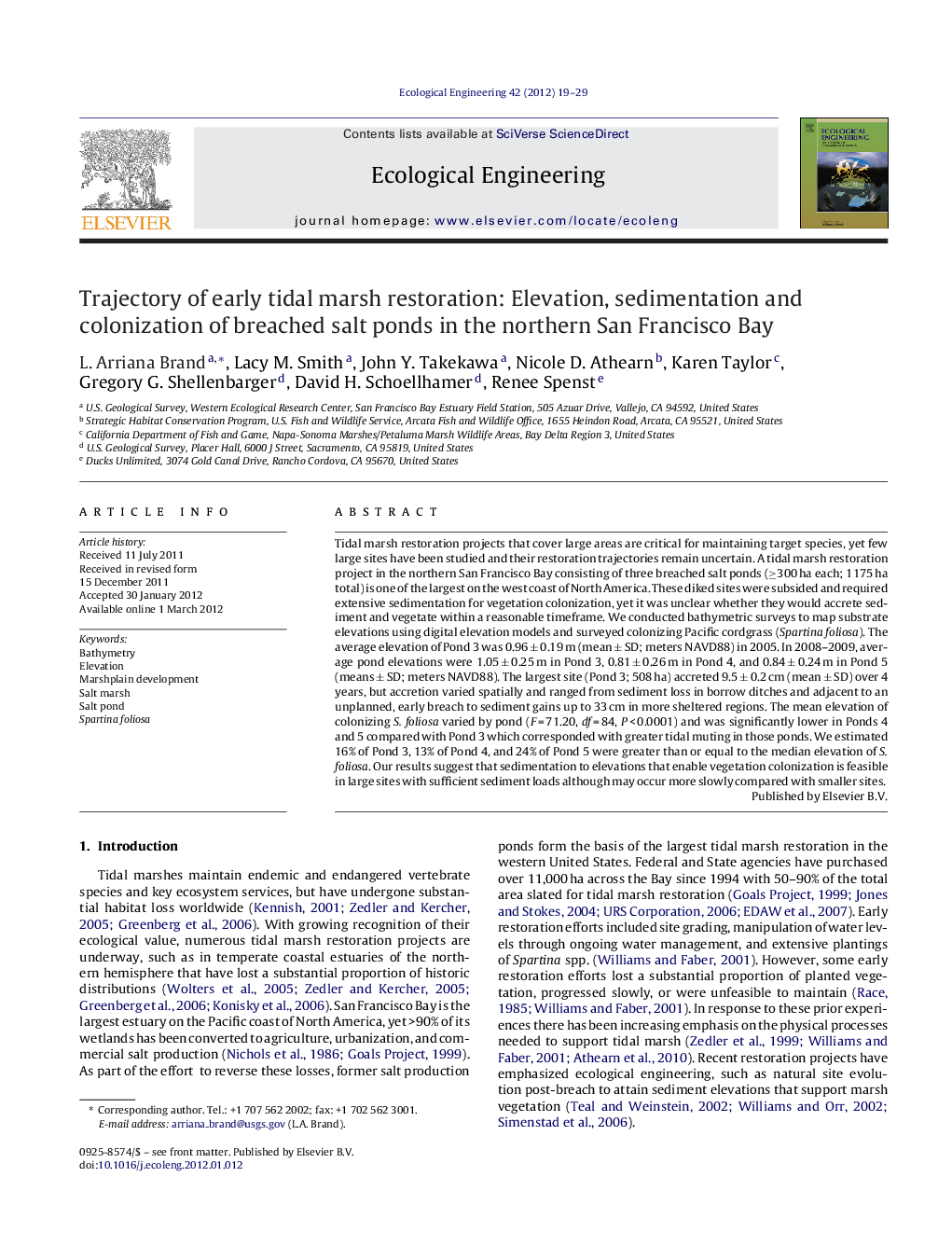| Article ID | Journal | Published Year | Pages | File Type |
|---|---|---|---|---|
| 6302743 | Ecological Engineering | 2012 | 11 Pages |
Abstract
Tidal marsh restoration projects that cover large areas are critical for maintaining target species, yet few large sites have been studied and their restoration trajectories remain uncertain. A tidal marsh restoration project in the northern San Francisco Bay consisting of three breached salt ponds (â¥300 ha each; 1175 ha total) is one of the largest on the west coast of North America. These diked sites were subsided and required extensive sedimentation for vegetation colonization, yet it was unclear whether they would accrete sediment and vegetate within a reasonable timeframe. We conducted bathymetric surveys to map substrate elevations using digital elevation models and surveyed colonizing Pacific cordgrass (Spartina foliosa). The average elevation of Pond 3 was 0.96 ± 0.19 m (mean ± SD; meters NAVD88) in 2005. In 2008-2009, average pond elevations were 1.05 ± 0.25 m in Pond 3, 0.81 ± 0.26 m in Pond 4, and 0.84 ± 0.24 m in Pond 5 (means ± SD; meters NAVD88). The largest site (Pond 3; 508 ha) accreted 9.5 ± 0.2 cm (mean ± SD) over 4 years, but accretion varied spatially and ranged from sediment loss in borrow ditches and adjacent to an unplanned, early breach to sediment gains up to 33 cm in more sheltered regions. The mean elevation of colonizing S. foliosa varied by pond (F = 71.20, df = 84, P < 0.0001) and was significantly lower in Ponds 4 and 5 compared with Pond 3 which corresponded with greater tidal muting in those ponds. We estimated 16% of Pond 3, 13% of Pond 4, and 24% of Pond 5 were greater than or equal to the median elevation of S. foliosa. Our results suggest that sedimentation to elevations that enable vegetation colonization is feasible in large sites with sufficient sediment loads although may occur more slowly compared with smaller sites.
Related Topics
Life Sciences
Agricultural and Biological Sciences
Ecology, Evolution, Behavior and Systematics
Authors
L. Arriana Brand, Lacy M. Smith, John Y. Takekawa, Nicole D. Athearn, Karen Taylor, Gregory G. Shellenbarger, David H. Schoellhamer, Renee Spenst,
